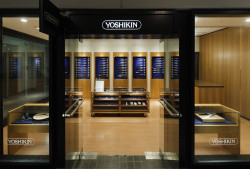
Originally published on metropolis.co.jp on February 2012
The Japanese garden’s beauty is unique. While other lands can boast equally or even more beautiful outdoor spaces, nowhere else is the garden considered to be so much a work of pure art as in Japan. It is therefore unsurprising that the Watarium Museum of Contemporary Art has focused on Japan’s great garden designer Mirei Shigemori, who transformed the art before his death in 1975.
Starting from an interest in ikebana and the tea ceremony, Shigemori published a 26-volume History of the Japanese Garden, visiting over a thousand Japanese gardens from 1932-38. His first major project came in 1939; an avant-garde design for the Kyoto Zen temple Tofuki-ji’s garden. In total, he designed over 200 gardens in a variety of styles, while remaining faithful to the traditional Japanese spirit.
Shigemori does not fit easily inside a museum. The Watarium makes a brave attempt, recreating elements of his famous Tofuku-ji design. This includes a reconstruction of a chessboard-style moss garden as well as a dry Zen garden with gravel raked into ripples emanating outwards from stone cylinders.
To these are added items of his calligraphy, pottery, furniture and personal items—like the coat he wore when overseeing work on site. Video installations (no English) show an interview, his gardens, and a short documentary with newly discovered photos of Shigemori’s collaboration with Isamu Noguchi, when the famous Japanese-American sculptor was working on a Japanese garden for the Paris UNESCO building. The pictures show Noguchi and Shigemori hunting for special rocks in a stony riverbed. Shigemori favored awa no ao shi, a rock with subtle green tones found only on Shikoku, according to museum curator Etsuko Watari.
The exhibition might strike the average visitor as baffling and esoteric, but its chief pleasure is trying to work out exactly what Shigemori’s aesthetic was. The gardens shown through photos and videos seem to show the expression of a common spirit in various ways.
Unlike the English landscape garden, which uses a romanticized version of nature as its ideal, or the French formal garden with its deadening symmetry, the principles behind Japan’s gardens are more elusive. The obvious points are stylization and use of symbolism. Partly, this is an attempt to maximize use of space with artful arrangements of elements that poetically evoke something vaster. Gardens often recreate grand vistas, with rocks representing mountains, and beds of gravel the sea.
In one of Shigemori’s true masterpieces, “Kyokutohtei,” a garden he designed for a private residence, he takes this technique to the ultimate level: the garden is surrounded by a wall made of partly burned wood. This creates a shiny, black backdrop suggestive of the infinite depths of the universe. Given the fact that this was made in 1951, a few years after WWII, the burnt surfaces also suggest the horrors of the atomic bomb.
Unfortunately, Shigemori designed only one private garden in the entire Kanto region, so this exhibition presents an ideal opportunity to get acquainted with the work of this seminal artist and his chosen medium.
“The Gardens of Mirei Shigemori,” Watarium Museum of Contemporary Art, until Mar 25 (listing).









